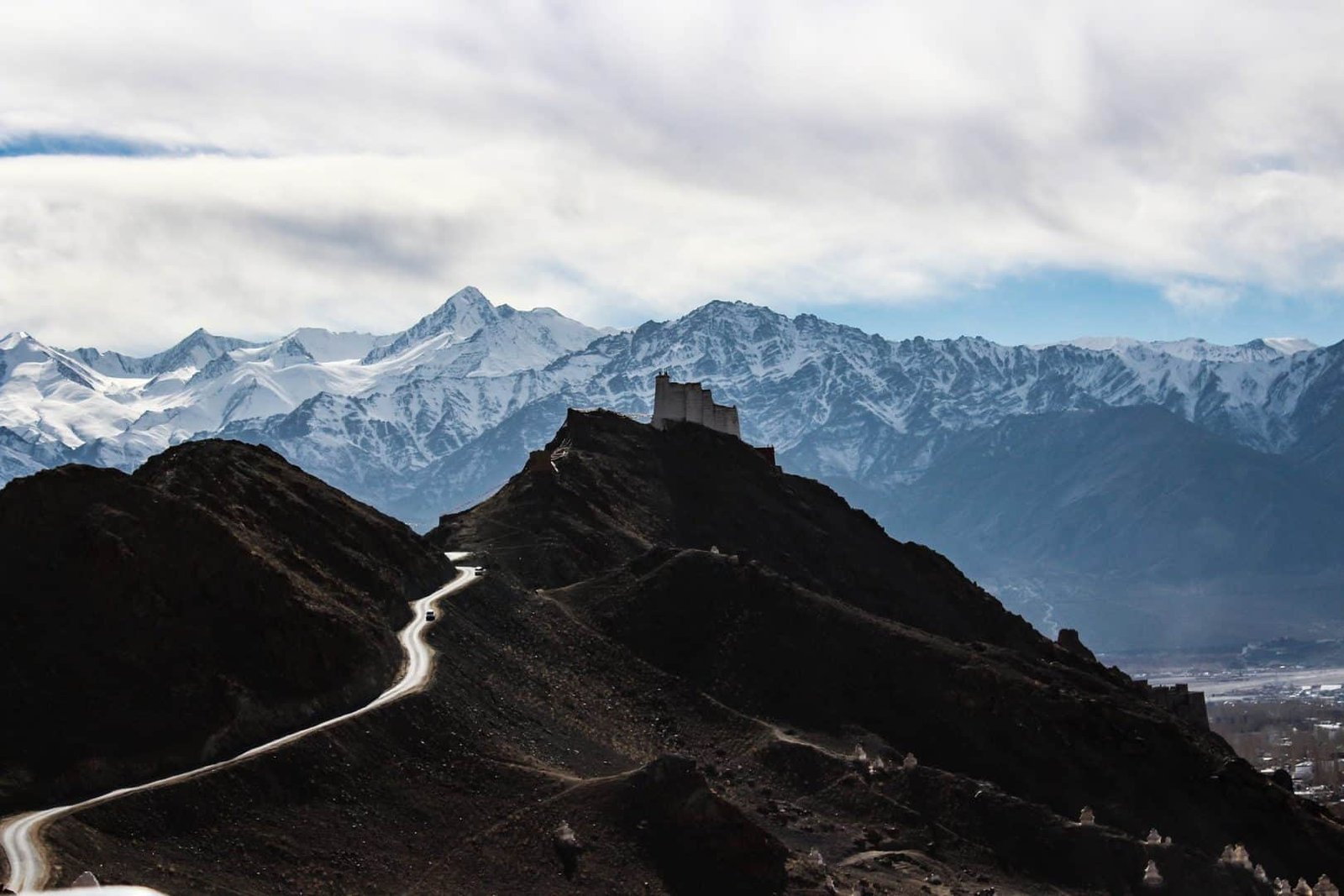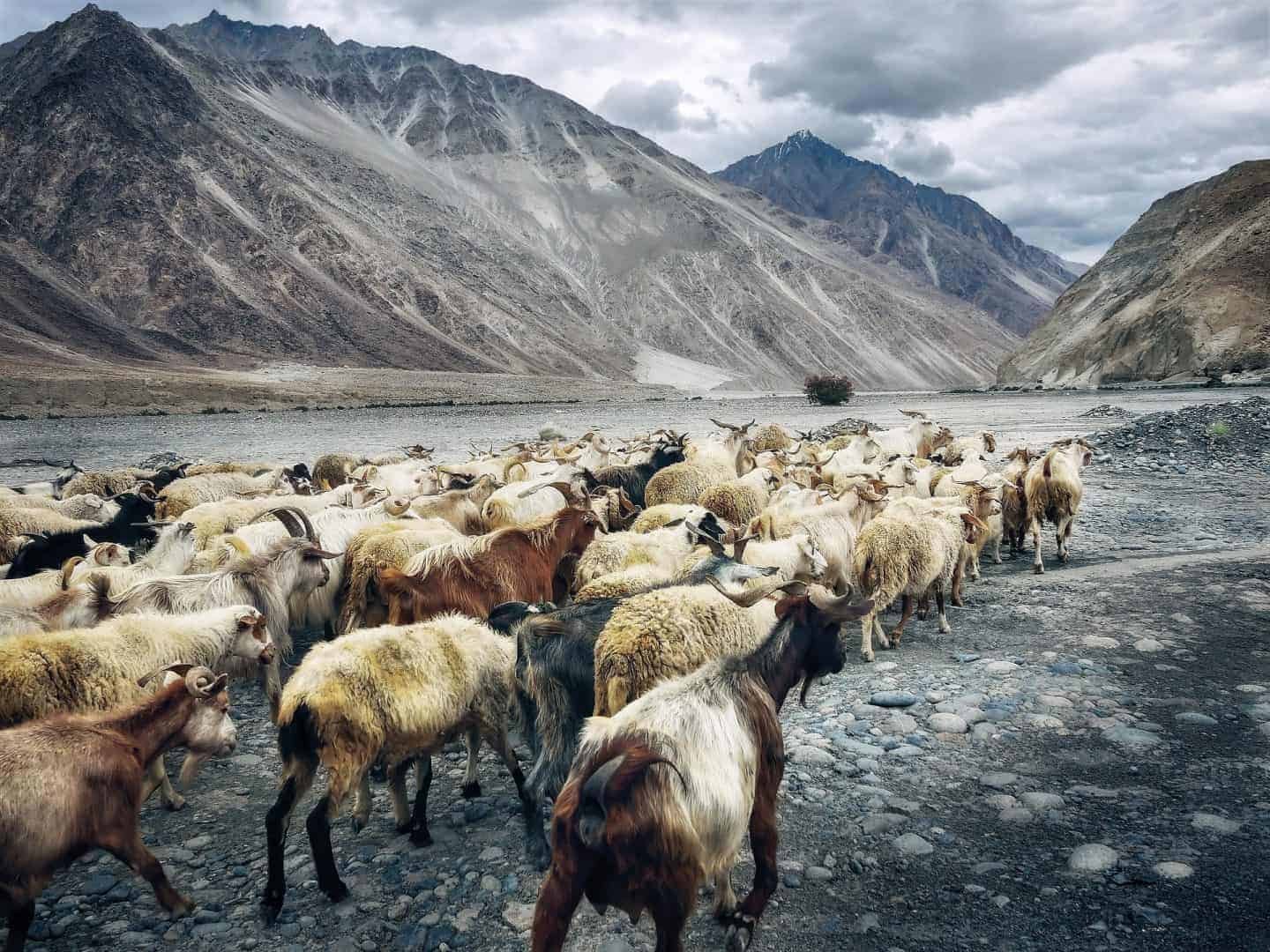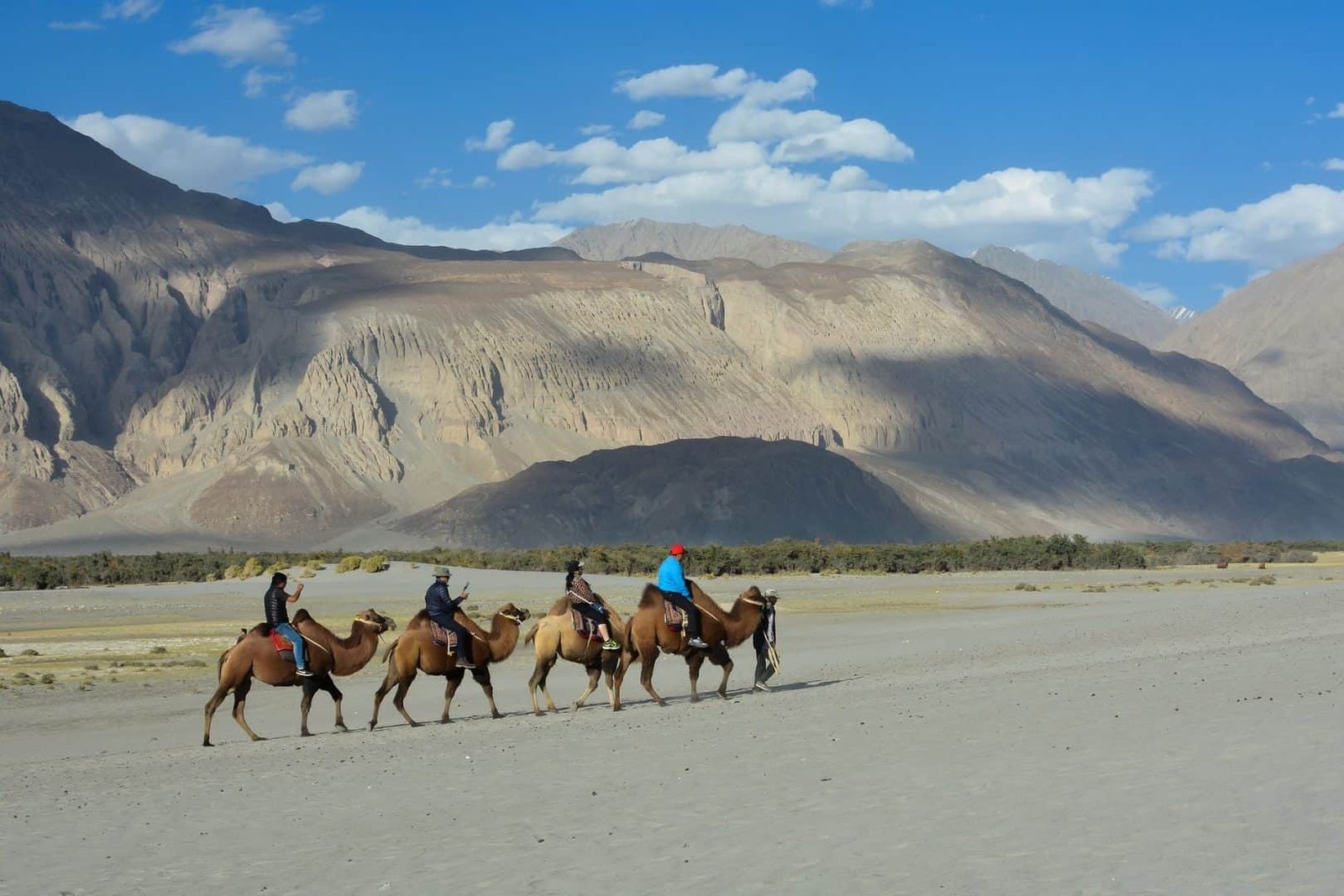PAP Leh or Protected Area Permit for Leh is a travel document issued by the Government of India to foreign nationals. This document allows them to visit the restricted or protected areas of the Leh Ladakh region for a limited period of time.
All foreign nationals and Non-Resident Indians (except for citizens of Bhutan) are required to obtain a protected area Permit or PAP Leh if they wish to explore the restricted and/or protected areas in the Ladakh region.
The permit can only be issued through a registered travel agent and is valid for a minimum of two people. Travelers often get confused with the term – Protected Area. It is essential to understand that the part of Jammu and Kashmir which falls between the ‘Inner Line’ and the International border, is known as a protected area or protected region.

To say that Ladakh is beautiful is an understatement. However, since Ladakh lies close to the Indo-China border, it’s a protected area. Under the Foreigners Order of 1958, specific areas in India have been declared as Protected Areas. In addition to them, there are other areas that have been declared as Restricted Areas under the Foreigners (Restricted Areas) Order of 1963.
PAP Leh: An Overview
The main purpose of a Protected Area Permit for Leh is to regulate the movement of visitors into the region. This is done for the purpose of security. The reason being, Ladakh lies very close to the international border (with China).
Here are a few important details about PAP Leh for travelers.
| Who needs a PAP Leh?
Foreign Nationals (except for citizens of Bhutan) and Non-Residential Indians (NRIs) |
| Validity
A week or 7 days |
| Mode of Application
Through a registered travel agent at the District Magistrate Office in Leh |
| Documents Required
Restricted Area Application Form (Duly filled and signed) Photocopy of a valid Passport Photocopy of valid Indian visa Passport size photos |
What is PAP Leh?
Certain areas in India have been declared by law as Protected Areas or Restricted Areas. In order to enter or stay in these areas, obtaining a permit called Protected Area Permit or PAP is essential.
The area of the Indian State of Jammu & Kashmir, lying between the ‘Inner-Line’ and the International Border has been declared as a Protected Area.
Indian nationals can visit the place with a permit called the Inner Line Permit. A group of two or more foreign nationals or NRIs can visit the region with a Protected Area Permit referred to in this article as PAP Leh.
This is possible when this group is sponsored and directed by a recognized travel agent.
At the time of procuring PAP Leh, the group has to be accompanied by an authorized representative of a recognized travel agent. This agent would then act as the escort to the group. Along with that, you also need to carry a pre-defined itinerary.
Validity of PAP Leh
PAP Leh is only valid for a maximum of 7 days. However, there is no limit to the number of times you visit a place within the valid period, as long as you carry the necessary permit. After this period, you need to re-apply for the permit if you wish to extend your stay.
Role of Travel Agents for Visiting Protected Areas in Leh
It is mandatory that the foreign nationals are accompanied by an authorized representative of the recognized travel agent. He will act as the escort to the group.
It is obligatory on the part of the travelers as well as the tour operators, that tourists travel on the identified tour circuits only.

Pangong Tso Lake, popularly known as the Pangong Lake is the most sort after destination in Leh. It is mandatory for all foreign nationals as well as NRIs to procure a Protected Area Permit before visiting this majestic place. The process is very easy.
Frequently Asked Questions about PAP Leh
It is quite common for visitors from outside India to have valid concerns about PAP Leh.
Hence, in the table below, I have tried to answer the commonly asked questions by travelers from outside India.
| Q1. I am a solo traveler. Will I be able to get PAP Leh?
Yes, you will be able to get a PAP Leh. However, you will not be able to get it as a solo traveler. Your travel agent will group you with another group and then procure it for you. |
| Q2. Is it mandatory to show PAP at every check point?
Whenever you’ll be asked to show it, kindly go ahead and do so. |
| Q3. What is the maximum validity of PAP?
7 days |
| Q4. Do I need to make a payment for PAP Leh online?
No. It is not allowed. The sensible thing to do is to procure it via your travel agent. |
| Q5. Is it expensive to obtain a PAP?
Not at all. |
| Q6. Are there places where PAP is not required?
Yes. If a traveler wants to indulge in some local exploration around the main town of Leh, then PAP isn’t required. |
| Q7. Is PAP needed for visiting Nubra Valley?
Yes |
| Q7. Is PAP needed for visiting Pangong Lake?
Yes |
If you have any more questions concerning the Protected Area Permit, feel free to post them in the comments section at the end of this blog.
Important Points to Remember about PAP Leh
Here are a few quick points that you need to remember about Protected Area Permit Leh.
| Individual tourists are not permitted to get a PAP Leh. |
| PAP Leh is valid only for a group of tourists, comprising a minimum of two people. |
| The permit is specific only to a tourist route or area, and entry or exit points of that particular region. |
| Tourists should not enter any other area or circuit apart from the ones mentioned in the permit they already have. |
| After the expiry of the permit i.e. 7 days, tourists should not stay in the area. |
| If you wish to extend your stay, reapply for PAP Leh after the expiry of the current permit. |
| Trekking in the restricted or protected areas is prohibited unless being steered by a registered travel agent in the company of a State Police Personnel. |
| Before heading towards Leh, draw out a detailed itinerary for your visit mentioning the places you’d like to visit. This will help your travel agent to apply for the right kind of permit. |
All through your Leh-Ladakh trip, keep these points at the back of your mind.

In order to visit many of Ladakh’s beautiful gems, it is important that you have an ILP with you at all times. It would be a shame to miss out on Ladakh’s pretty places just because you don’t have an Inner Line Permit. It’s just not worth it.
Subdivisions that Require Protected Area Permit
The places that do require a PAP Leh have been divided into subdivisions or circuits. A visit to all the places in each Sub-Division together is limited to a maximum of seven days.
Ladakh region is divided into subdivisions.
The following subdivisions and areas require PAP Leh to visit them.
| i) Khaltsi subdivision (Drokpa Area)
Khaltsi – Domkhar – Skurbuchan – Hanudo – Baima – Dha |
| ii) Nubra subdivision
a) Leh – Kahrdungla – Khalsar – Tirit upto Panamik. |
| iii) Nyoma subdivision
a) Leh – Upshi – Chumathang – Mahey – Puga – Tsomoriri Lake/ Korzok |
Now that I’ve mentioned the areas that need a Protected Area Permit, you should also know about the places that do not need a PAP Leh.
Which Areas Do not Need a PAP Leh?
As a traveler, you are free to visit the following places without PAP Leh.
| Zanskar Valley |
| Suru Valley |
| Leh – local sightseeing |
| Local places in and around Leh town |
Now let me throw some light on the kind of individuals that need a Protected Area Permit.

Leh town offers a lot to explore. Furthermore, a PAP isn’t required for it. You can choose to explore the markets of Leh, and engage in some shopping. You can buy singing bowls, prayer flags, these beautiful woolen and Pashmina shawls, etc.
Who Needs a PAP Leh and Why?
Since some areas of Leh are very close to the International Border, a PAP Leh becomes important to monitor the movement in the region.
All foreign nationals except for the citizens of Bhutan and Non-Resident Indians are required to obtain a PAP Leh before entering restricted areas of the region.
| Note: It is important to know that there are two routes for travelling to Leh, one from Manali to Leh and the other is from Srinagar to Leh.
If you are travelling from Srinagar to Leh, you don’t need any permit other than the PAP. However, if you are travelling from Manali to Leh, then you might be asked for an Inner Line Permit called “Beyond Rohtang” for crossing the Rohtang pass. |
How to Apply for a PAP Leh?
It is important to note that a PAP Leh can be obtained through a registered travel agent only. A minimum of 2 people are required to secure a PAP Leh.
If you are a solo traveler, there is nothing to worry about. Your travel agent will get you the permit by grouping you with some other group.
Once you get your permit, you don’t need to tag along with the group and you are free to explore on your own.
However, do carry your PAP Leh which will be checked at several checkpoints henceforth.
| Tourists from Bangladesh, Pakistan, China, Afghanistan and Burma are required to procure their PAP Leh from the Ministry of Home Affairs, Delhi.
Tourists on a diplomatic Visa are required to get their PAP Leh from the Ministry of External Affairs in Delhi. |
At any point, if there is any confusion regarding the permit, it’s best to contact your registered travel agent.

Generally referred to as large ground squirrels, Marmots are cute and innocent-looking mammals residing at high altitudes. If you are lucky to come across marmots, please ensure that you do not scare them away by going too close or taking pictures.
Official Circular Issued on PAP Leh
For the sake of your convenience, the official circular issued by the Additional District Magistrate is being uploaded below. Read it and understand the document better.
Relaxation for Nubra Valley
After careful talks with the Jammu and Kashmir Government, the Ministry of Home Affairs under the honourable Government of India, have recently allowed foreign nationals to visit Nubra Valley.
Earlier, foreign nationals were not issued permits and were not allowed to visit some parts of the beautiful region.
Among the restrictive areas were places like Turtuk and Yarma. Both these places are highly sensitive zones. Turtuk as a territory was liberated from Pakistan Occupied Kashmir in the early 70s and Yerma falls on the way to the Siachen glacier.
After relaxing the norms, there has been an increased inflow in the number of travelers visiting the region on a monthly basis.

Coming back from Nubra Valley without experiencing the double-hump camel safari would be a sin. Although this might seem like a really touristy thing to do, it’s absolutely worth it. These camels have been used for transport purposes for years now.
While travelling, it is extremely important that you procure and produce relevant documents and permits. Abiding by the law of the land should always be paramount.
Enjoy the trip, connect with the local people and their culture and always obey the law.
If you are a foreign national and the beautiful region of Leh-Ladakh is on your travel bucket list, go ahead and apply for the PAP Leh and explore the splendours of the “Juleh” Land.
Happy wayfaring 🙂

